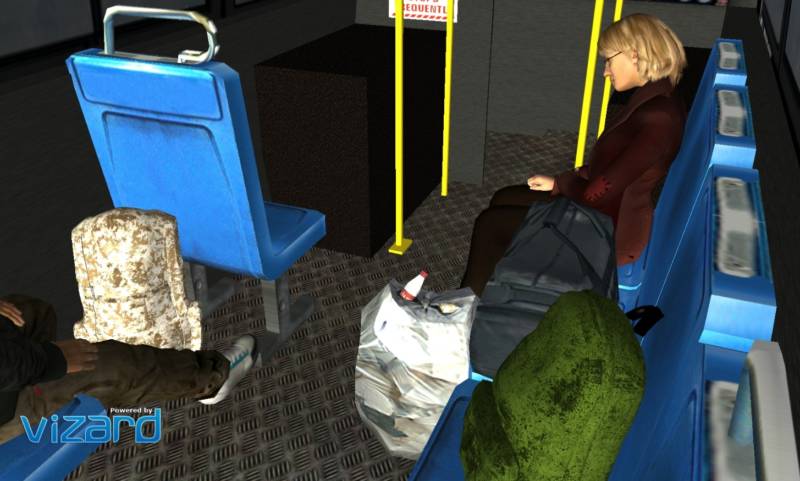Hotel 22 by Elizabeth Lo from Short of the Week on Vimeo.
The bus, it turns out, is an ideal virtual reality setting for delivering a variety of stories that show how complex the problem of homelessness is. As the bus travels down the street in the VR world, I click on each passenger, and hear a recording of Ogle telling me how they got on the bus.
In the back, a man sits with a boy of about 10. “This is a father, Ray, and his son, named Ethan,” Ogle says in a flat, emotionally neutral tone. “Ethan’s mother suffered from a chronic illness and recently passed away. Left with the hospital bills, Ray is in debt. They’re on a family shelter waiting list. So until free spaces become available, they sleep on the bus at night.“
Empathy is uncomfortable
Jamil Zaki, an assistant professor of psychology at Stanford’s Social Neuroscience Lab, helped the VR team design its study, and he says we often go out of our way to avoid feeling empathy. “People are incredibly efficient at cutting the world up into us and them,” Zaki says. “And when they do so, they’re also incredibly efficient at cutting off whoever’s on the other side of that boundary. Even when people acknowledge that someone who’s different from them experiences pain and suffering, they often find ways to blame that individual. They say ‘Well, that person’s having a bad time, but it’s because of the choices that they made. I would never been in that position.’”
But wearing a VR headset that engages your ears, eyes and even peripheral vision, makes it hard to shut out the pain of the people or avatars in front of you. “Once you understand the world as someone else sees it, and inhabit their inner life, you’re on the hook!” Zaki says. “You now, in essence, have a responsibility to care for that person, and maybe invest in their well-being.”
As University of Southern California VR researcher Nonny de la Peña explained in a recent TED talk, the VR scenario may also force people to confront strong emotions like panic when events occur that they feel powerless to stop. (Even though, physically, you could just take your headset off.)
Testing the technology
The Stanford researchers are looking for a diverse pool of around 1,000 people to test Empathy at Scale before the end of this year. So they’ve set up a mobile testing unit at places like the Tech Museum in San Jose.
Jhansi Raju, an ophthalmologist from Chicago, tried out the technology while visiting the Tech Museum with her family recently. She found the Hotel 22 sequence most affecting. “It showed the human side of homelessness,” Raju says. “Everyone’s story was so different.”
Raju was especially moved by the story of Ray and his son Ethan. “For me, having a child and imagining how you could live on a bus with a kid, that was very moving and very sad to see,” Rajus says.



